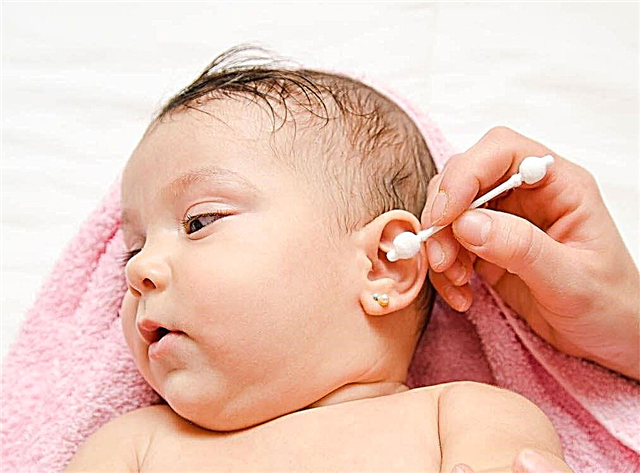
If doctors diagnosed a defect in the septum dividing the atria, this causes the parents to worry about the life of the baby. But instead of panic, it will be more constructive to learn more about the defect identified in the baby, in order to obtain information on how to help the child and how such a cardiac pathology threatens him.

What is an atrial septal defect
This is the name of one of the congenital heart defects, which is a hole in the septum through which blood is released from the left half of the heart to the right. Its sizes can be different - both tiny and very large. In especially severe cases, the septum may be absent altogether - a 3-chambered heart is detected in the child.
Also, some children may develop a heart aneurysm. It should not be confused with such a problem as aneurysm of the blood vessels of the heart, since such an aneurysm in newborns is a protrusion of the septum dividing the atrium with its strong thinning.
This defect in most cases does not pose a particular danger and, if small in size, is considered a minor anomaly.

Causes
The appearance of ASD is due to heredity, but the manifestations of the defect also depend on the effect on the fetus of negative external factors, including:
- Chemical or physical environmental influences.
- Viral diseases during pregnancy, especially rubella.
- The use of drugs or alcohol-containing substances by the expectant mother.
- Radiation exposure.
- Work of a pregnant woman in hazardous conditions.
- Taking drugs dangerous for the fetus during gestation.
- The presence of diabetes in the mother.
- The age of the expectant mother is over 35 years old.
- Toxicosis during gestation.
Under the influence of genetic and other factors, the development of the heart is disrupted at its earliest stages (in the 1st trimester), which leads to the appearance of a defect in the septum. This defect is often combined with other pathologies in the fetus, for example, cleft lip or kidney defects.

Hemodynamics in ASD
- In utero, the presence of a hole in the septum between the atria does not in any way affect the function of the heart, since blood is dumped through it into the systemic circulation. This is important for the vital activity of the baby, because his lungs do not function and the blood that is intended for them goes to the organs that work more actively in the fetus.
- If the defect remains after childbirth, blood during heart contractions begins to flow into the right side of the heart, which leads to overload of the right chambers and their hypertrophy. Also, a child with ASD over time experiences compensatory ventricular hypertophy, and the walls of the arteries become denser and less elastic.
- With very large orifice sizes, hemodynamic changes are observed already in the first week of life. Due to the ingress of blood into the right atrium and excessive filling of the pulmonary vessels, pulmonary blood flow increases, which threatens the child with pulmonary hypertension. Pulmonary congestion also results in edema and pneumonia.
- Further, the child develops a transitional stage, during which the vessels in the lungs spasm, which is clinically manifested by an improvement in the condition. During this period, it is optimal to perform the operation in order to prevent hardening of the vessels.
Kinds
A defect in the septum dividing the atria is:
- Primary. It is distinguished by its large size and location at the bottom.
- Secondary. Often small, located in the center or near the outlet of the vena cava.
- Combined.
- Small. It is often asymptomatic.
- Average. Usually detected in adolescence or in an adult.
- Big. It is detected quite early and is characterized by a pronounced clinic.
- Single or multiple.

Depending on the location, the pathology is central, upper, front, lower, back. If, in addition to ASD, no other heart pathologies have been identified, the defect is called isolated.
Symptoms
The presence of ASD in a child may manifest itself:
- Cardiac arrhythmias with the onset of tachycardia.
- Shortness of breath.
- Weakness.
- Cyanosis.
- Lagging in physical development.
- Pain in the heart.
With a small defect in a child, any negative symptoms may be completely absent, and the ASD itself is an accidental "find" during a planned ultrasound scan. If, with a small hole, clinical symptoms appear, then this often happens during crying or physical exertion.
With large and medium-sized defect, symptoms may appear at rest. Because of shortness of breath, babies suckle with difficulty, gain weight poorly, and often suffer from bronchitis and pneumonia. Over time, their nails (they look like watch glasses) and fingers (they look like drumsticks) become deformed.

Possible complications
ASD can be complicated by such pathologies:
- Severe pulmonary hypertension.
- Infective endocarditis.
- Stroke.
- Arrhythmias.
- Rheumatism.
- Bacterial pneumonia.
- Acute heart failure.
If such a defect is not treated, no more than half of the children born with ASD will survive to 40-50 years. In the presence of a large septal aneurysm, there is a high risk of rupture, which can be fatal for the child.
Diagnostics
When examined, children with such a defect will have insufficient body weight, bulging on the chest ("heart hump"), cyanosis with large holes. After listening to the baby's heart, the doctor will determine the presence of noise and splitting tones, as well as a weakening of breathing. To clarify the diagnosis, the baby will be sent to:
- ECG - symptoms of right heart hypertrophy and arrhythmia will be determined.
- X-ray - helps to identify changes in both the heart and lungs.
- Ultrasound - will show the defect itself and clarify the hemodynamic problems that it caused.
- Cardiac catheterization - prescribed to measure the pressure inside the heart and blood vessels.
Sometimes the child is also prescribed angio- and phlebography, and if the diagnosis is difficult, MRI.

Do I need an operation
Surgical treatment is not required for all children with a defect in the septum that delimits the atria. With a small size of the defect (up to 1 cm), its independent overgrowth is often observed by the age of 4 years. Children with this ASD are examined annually to monitor their condition. The same tactic is chosen for a small septal aneurysm.
Treatment of children diagnosed with moderate or large ASD and large cardiac aneurysm is surgical. It provides for the implementation of either endovascular or open surgery. In the first case, the defect is closed to children with a special occluder, which is delivered directly to the child's heart through large vessels.
Open surgery requires general anesthesia, hypothermia, and connection of the baby to an artificial heart. If the defect is medium, it is sutured, and for large sizes, the hole is closed with a synthetic or pericardial flap. To improve the work of the heart, cardiac glycosides, anticoagulants, diuretics and other symptomatic agents are additionally prescribed.
The following video will provide you with helpful tips for parents who are dealing with this condition.
Prevention
To prevent the occurrence of ASD in a child, it is important to carefully plan the pregnancy, pay attention to prenatal diagnosis and try to exclude the influence of negative external factors on the pregnant woman. The expectant mother should:
- Eat well balanced.
- Get enough rest.
- Regularly go to the consultation and take all the tests.
- Avoid toxic and radioactive effects.
- Do not take medications without a doctor's prescription.
- Timely protect yourself from rubella.
- Avoid communicating with people with ARVI.




